|
Books Should Be Free Loyal Books Free Public Domain Audiobooks & eBook Downloads |
|
|
Books Should Be Free Loyal Books Free Public Domain Audiobooks & eBook Downloads |
|
Books of Memoirs |
|---|
|
Book type:
Sort by:
View by:
|
By: Moses Montefiore (1784-1885) | |
|---|---|
 Diaries of Sir Moses and Lady Montefiore, Volume I Comprising Their Life and Work as Recorded in Their Diaries From 1812 to 1883
Diaries of Sir Moses and Lady Montefiore, Volume I Comprising Their Life and Work as Recorded in Their Diaries From 1812 to 1883
| |
By: Nathaniel Hawthorne (1804-1864) | |
|---|---|
 Our Old Home
Our Old Home
These essays, based on Hawthorne’s stay in England from 1853 to 1857 as American Consul in Liverpool, were first published in the form of a series of travel articles for The Atlantic Monthly.In these writings, he displays his humor, his empathetic nature, his pride in his country, and sometimes his sharp judgment of others. He shares with us the difficulties of being a consul in the 1850’s, takes us on a tour with him through rural England and Scotland, shows us the splendors of London, and the horrors of the poverty that so many suffered. (Introduction by Margaret) | |
By: Nellie McClung (1873-1951) | |
|---|---|
 Three Times and Out
Three Times and Out
The true story of M. C. Simmons, a Canadian soldier captured by the German Army during the early days of World War I. We read of his sixteen months of imprisonment, his encounters with other captured troops of the other Allied armies and his observations of the nature of his captors and their countrymen. Most compellingly we read of his escape from POW camp, his recapture and punishment, and then the capture and punishment following his second escape attempt, climaxing in his third escape attempt and daring travel through enemy territory against all odds... | |
By: Nicholas Cresswell (1750-1804) | |
|---|---|
 Journal of Nicholas Cresswell, 1774-1777
Journal of Nicholas Cresswell, 1774-1777
Against his family's wishes, the son of an English landowner emigrates to America in 1774 for reasons he won't reveal. His adventures take him from Barbados to trade cotton, to the Ohio frontier in search of farmland, and back to the ruins of New York during the Revolutionary War. Refusing to fight for the American side, fearing death in prison, and with his money running out, he struggles to find a way back to England. Amazing adventures and fascinating observations of life, politics, piracy, survival in Indian country, and parties at George Washington's house during this critical period in America's history. | |
By: Nicolas-Joseph Thiéry de Menonville (1739-1780) | |
|---|---|
 Travels to Oaxaca
Travels to Oaxaca
Botanical Piracy! A French botanist plots to steal red dye cochineal insects from Spanish Mexico and transplant them and their cacti hosts to the French Caribbean. The year is 1776. Nicolas-Joseph Thiéry de Menonville is a fast talker and a quick thinker. Botanist and physician by training, he insinuates his way from Port-au-Prince, first to Havana and then to the Mexican mainland on the ruse that he is searching for a botanical cure for gout. In Vera Cruz, however, his passport is confiscated, and the Viceroy orders him to leave Mexico on the first available ship... | |
By: Nikola Tesla (1856-1943) | |
|---|---|
 "My Inventions" and Other Works, The Autobiography of Nikola Tesla, Electrical Experimenter February to October 1919
"My Inventions" and Other Works, The Autobiography of Nikola Tesla, Electrical Experimenter February to October 1919
Between February and October 1919, Nikola Tesla submitted many articles to the magazine Electrical Experimenter. The most famous of these works is a six part series titled "My Inventions", which is an autobiographical account of Nikola Tesla's life and his most celebrated discoveries. This work has been compiled and republished as a stand-alone book several times under different names, but has been a cause of some controversy due to some versions deviating from the original text without explanation... | |
By: Noah Davis (b. 1804) | |
|---|---|
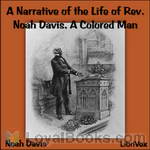 A Narrative of the Life of Rev. Noah Davis, A Colored Man
A Narrative of the Life of Rev. Noah Davis, A Colored Man
The object of the writer, in preparing this account of himself, is to RAISE SUFFICIENT MEANS TO FREE HIS LAST TWO CHILDREN FROM SLAVERY. Having already, within twelve years past, purchased himself, his wife, and five of his children, at a cost, altogether, of over four thousand dollars, he now earnestly desires a humane and Christian public to AID HIM IN THE SALE OF THIS BOOK, for the purpose of finishing the task in which he has so long and anxiously labored. God has blessed him in an extraordinary... | |
By: Olive Gilbert (?-?) & Sojourner Truth (1797-1883) | |
|---|---|
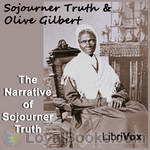 The Narrative of Sojourner Truth
The Narrative of Sojourner Truth
The Narrative of Sojourner Truth is the gripping autobiographical account of Sojourner Truth's life as a slave in pre-Civil War New York State, and her eventual escape to Freedom. Since Sojourner could neither read or write, she dictated her story to Olive Gilbert after they met at a Women’s Rights rally. The Narrative was first published in 1850, and was widely distributed by the Abolitionist Movement. It was one of the catalysts for the rise of anti-slavery public opinion in the years leading up to the Civil War... | |
By: Onoto Watanna (1875-1954) | |
|---|---|
 Marion, the Story of an Artist's Model
Marion, the Story of an Artist's Model
In this Asian/Canadian perspective on "foreignness," Marion eventually leaves the cruelty of racial discrimination in Quebec and moves to New York in pursuit of her dream to become an artist. In New York not only does she continue to confront racial discrimination, but also objectification as a woman. Unable to support herself as an artist, she becomes an artist's model. This is a story of "passing," racial identity, and gender during the turn of the 20th century in New York. | |
By: Osborne Perry Anderson (1830-1872) | |
|---|---|
 Voice From Harper's Ferry
Voice From Harper's Ferry
A Voice from Harper's Ferry is the abolitionist testament of Osborne Perry Anderson, the only surviving black participant in the 1859 raid on Harpers Ferry organized by John Brown. The book details the motivations and preparations for the raid, the events that unfolded over several days in October 1859, and Anderson's subsequent escape. It ends with a short selection of poems from various sources honoring Brown and the movement for abolition. | |
By: P. G. Wodehouse (1881-1975) | |
|---|---|
 Leave it to PSmith
Leave it to PSmith
Freddie Threepwood and his uncle are in difficulties. Freddie wants a thousand pounds to start a bookmaker’s business and to marry Eve, while his uncle wants to raise three thousand pounds, unbeknown to his wife, to help a runaway daughter. Freddie persuades his uncle to steal his wife’s necklace and sees Psmith’s advertisement in a daily paper. Freddie enlists the services of Psmith to steal the necklace. There are plots and counterplots. This is the fourth book in the "PSmith" series, following on from "Mike and PSmith", "PSmith in the City" and "PSmith, Journalist". | |
By: P. T. Barnum (1810-1891) | |
|---|---|
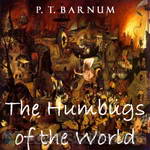 The Humbugs of the World
The Humbugs of the World
P. T. Barnum exposes some of the chief humbugs of the world with his usual entertaining style. He looks at medicine and quacks, ghosts, witchcraft, religious humbugs, money manias, adventurers, personal reminiscences, and much more. | |
By: Pat O'Brien (1890-1920) | |
|---|---|
 Outwitting The Hun; My Escape From A German Prison Camp
Outwitting The Hun; My Escape From A German Prison Camp
A true war narrative, published in 1918 while WWI was still going on. | |
By: Pearl White (1889-1938) | |
|---|---|
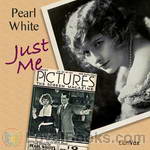 Just Me
Just Me
Perhaps the first memoir written by a film celebrity, Pearl White's Just Me gives a first-person account of the actress' rise to stardom. White guides us through her early childhood, her development as a performer, and finally to her breakout role in The Perils of Pauline--a role that made her the most popular "serial queen" of early cinema. Although romanticized and somewhat embellished, this book gives us a fascinating glimpse into the film industry's earliest years and the various myths of film stardom. | |
By: Peter Abelard (1079-1142) | |
|---|---|
 The Story of My Misfortunes
The Story of My Misfortunes
Autobiographies from remote historical periods can be especially fascinating. Modes of self-presentation vary greatly across the centuries, as of course does the very concept of Self. Peter Abelard, the medieval philosopher and composer, here gives a concise but vivid survey of his notoriously calamitous life. The work is couched in the form of a letter to an afflicted friend. Abelard’s abrasively competitive, often arrogant personality emerges at once in the brief Foreword, where he informs his correspondent: “(I)n comparing your sorrows with mine, you may discover that yours are in truth nought.. and so shall you come to bear them the more easily.” | |
By: Peter Randolph (1825-1897) | |
|---|---|
 From Slave Cabin To Pulpit and Sketches Of Slave Life
From Slave Cabin To Pulpit and Sketches Of Slave Life
Peter Randolph was born a slave in 1825 , was freed before the American Civil War, and became a clergyman in the Baptist tradition, dying in 1897. This is his 1893 autobiography. The latter third of the book is a slightly edited re-publication of a pamphlet he published in 1855 entitled “Sketches Of Slave Life." This recording omits chapter fourteen of "From Slave Cabin To Pulpit" because it is only a several-pages-long list of friends of the author with no narrative. | |
By: Philip Stanhope, 4th Earl of Chesterfield | |
|---|---|
 Letters to His Son on the Art of Becoming a Man of the World and a Gentleman
Letters to His Son on the Art of Becoming a Man of the World and a Gentleman
Philip Stanhope, Earl of Chesterfield, was at one time Ambassador to the Hague, negotiated the second Treaty of Vienna, was a founding governor of London’s Foundling Hospital, Lord-Lieutenant of Ireland, and Secretary of State. Having no legitimate children, his heir was his third cousin (another Philip) whom he adopted. Although known as a hard, calculating man, he is most well known for his letters to his natural son (i.e., illegitimate son) (also called Philip). When Philip died in 1768, the letters are addressed to his grandchildren (Philip’s two sons, Charles, and, yes, Philip!)... | |
By: Phoebe Yates Pember (1823-1913) | |
|---|---|
 Reminiscences of a Southern Hospital, by Its Matron
Reminiscences of a Southern Hospital, by Its Matron
Phoebe Yates Pember served as a matron in the Confederate Chimborazo military hospital in Richmond, Virginia, during the Civil War, overseeing a dietary kitchen serving meals to 300 or more wounded soldiers daily. Reminiscences of a Southern Hospital is her vivid recounting of hospital life and of her tribulations (and personal growth) as a female administrator. To follow her from day one, when she is greeted with “ill-repressed disgust” that “one of them had come,” and she, herself, “could... | |
By: Pierre Loti (1850-1923) | |
|---|---|
 War
War
Pierre Loti [Julien Viaud] (1850-1923) was a French naval officer and novelist. The present book is one of his few works of non-fiction, a small collection of letters and diary entries that describe his views and experiences in the wars and military operations in which he participated. Besides World War I, he also sheds light upon his views and involvement in the preparations for the Turkish Revolution of 1923, for which until today a famous hill and popular café in Istanbul are named after him. | |
By: Princess Der Ling | |
|---|---|
 Two Years in the Forbidden City
Two Years in the Forbidden City
THE author of the following narrative has peculiar qualifications for her task. She is a daughter of Lord Yu Keng, a member of the Manchu White Banner Corps, and one of the most advanced and progressive Chinese officials of his generation. she became First Lady-in-Waiting to the Empress Dowager, and while serving at the Court in that capacity she received the impressions which provide the subject-matter of this book. Her opportunity to observe and estimate the characteristics of the remarkable woman who ruled China for so long was unique, and her narrative throws a new light on one of the most extraordinary personalities of modern times... | |
By: Rabindranath Tagore (1861-1941) | |
|---|---|
 My Reminiscences
My Reminiscences
These Reminiscences were written and published by the Author in his fiftieth year, shortly before he started on a trip to Europe and America for his failing health in 1912. It was in the course of this trip that he wrote for the first time in the English language for publication. (from preface) | |
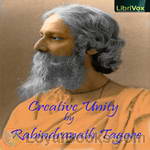 Creative Unity
Creative Unity
Gurudev Rabindranath Tagore talks of the many things he feels is necessary for creativity through joy of unity, he covers many topics like the creative ideal, makes comparisons of creativity between the east and the west, the spirit of freedom and about his idea of an University. | |
By: Ralph Scott | |
|---|---|
 Soldier's Diary
Soldier's Diary
This 1923 memoir of a World War I soldier is a well written much respected first-hand account of the brutal fighting in the last year of the war. - Summary by David Wales | |
By: Reuben Gold Thwaites (1853-1913) | |
|---|---|
 Afloat on the Ohio
Afloat on the Ohio
Afloat on the Ohio, An Historical Pilgrimage, of a Thousand Miles in a Skiff, From Redstone to Cairo.There were four of us pilgrims—my Wife, our Boy of ten and a half years, the Doctor, and I. My object in going—the others went for the outing—was to gather "local color" for work in Western history. The Ohio River was an important factor in the development of the West. I wished to know the great waterway intimately in its various phases,—to see with my own eyes what the borderers saw; in imagination, to redress the pioneer stage, and repeople it. ( From the Preface ) | |
 Historic Waterways
Historic Waterways
Historic Waterways, Six Hundred Miles of Canoeing down the Rock, Fox and Wisconsin Rivers.This volume is the record of six hundred miles of canoeing experiences on historic waterways in Wisconsin and Illinois during the summer of 1887. There has been no attempt at exaggeration, to color its homely incidents, or to picture charms where none exist. It is intended to be a simple, truthful narrative of what was seen and done upon a series of novel outings through the heart of the Northwest. If it may induce others to undertake similar excursions, and thus increase the little navy of healthy and self-satisfied canoeists, the object of the publication will have been attained. | |
By: Rex Brasher (1869-1960) | |
|---|---|
 Secrets of the Friendly Woods
Secrets of the Friendly Woods
Rex Brasher is best known for his having painted in watercolor a complete set of all the extant American birds during his lifetime. This is a collection of his writing that serves as a kind of memoir. These are set on his 150-acre farm purchased in 1911 and never developed in his lifetime beyond a simple house and an outbuilding or two. - Summary by KevinS | |
By: Richard Burton Deane (1848-1940) | |
|---|---|
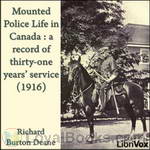 Mounted Police Life in Canada : a record of thirty-one years' service (1916)
Mounted Police Life in Canada : a record of thirty-one years' service (1916)
Learn more about the famous and respected Royal Canadian Mounted Police. This book is the personal recollections of one ‘Mountie’; his life, experiences and trials as an officer in a new frontier – The Canadian Northwest. | |
By: Richard Harding Davis (1864-1916) | |
|---|---|
 Notes of a War Correspondent
Notes of a War Correspondent
Experiences and observations of the journalist in the Cuban-Spanish War, the Greek-Turkish War, the Spanish-American War, the South African War, and the Japanese-Russian War, accompanied by "A War Correspondent’s Kit." | |
By: Richard Henry Dana, Jr. (1815-1882) | |
|---|---|
 Two Years Before the Mast
Two Years Before the Mast
| |
By: Robert Falcon Scott (1868-1912) | |
|---|---|
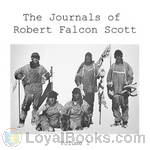 The Journals of Robert Falcon Scott
The Journals of Robert Falcon Scott
Capt. Robert F. Scott's bid to be the leader of the first expedition to reach the South Pole is one of the most famous journeys of all time. What started as a scientific expedition turned out to be an unwilling race against a team lead by R. Admunsen to reach the Pole. The Norwegian flag already stood at the end of the trail when Scott's party reached their target. All the five men of the Scott expedition who took part in the last march to the Pole perished on their way back to safety. Robert F. Scott kept a journal throughout the journey, all the way to the tragic end, documenting all aspects of the expedition... | |
By: Robert James Manion (1881-1943) | |
|---|---|
 Surgeon In Arms
Surgeon In Arms
Robert James Manion was a Canadian doctor who volunteered in the Canadian medical corps during World War I. This book is his memoir of the war. After the war he entered politics and served in several Canadian governments. The listener may note a lack of mention of the United States soldier; this is because the memoir was written before the entry of that country into the war. - Summary by David Wales | |
By: Robert Louis Stevenson | |
|---|---|
 The Amateur Emigrant
The Amateur Emigrant
In July 1879, Robert Louis Stevenson left Scotland to meet his future wife in her native California. Leaving by ship from Glasgow, Scotland, he determined to travel in steerage class to see how the working classes fared. At the last minute he was convinced by friends to purchase a ticket one grade above the lowest price, for which he was later thankful after seeing the conditions in steerage, but he still lived among the ‘lower’ classes. His comments on the experience make interesting reading. His father however was so shocked at the thought of his son associating with people ‘beneath him’ that the work was not published for a number of years, | |